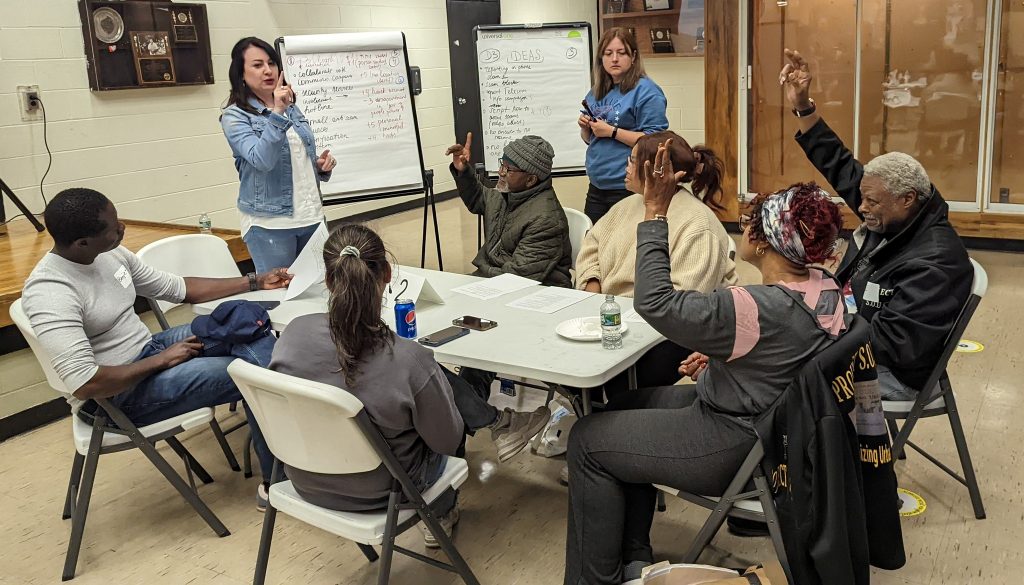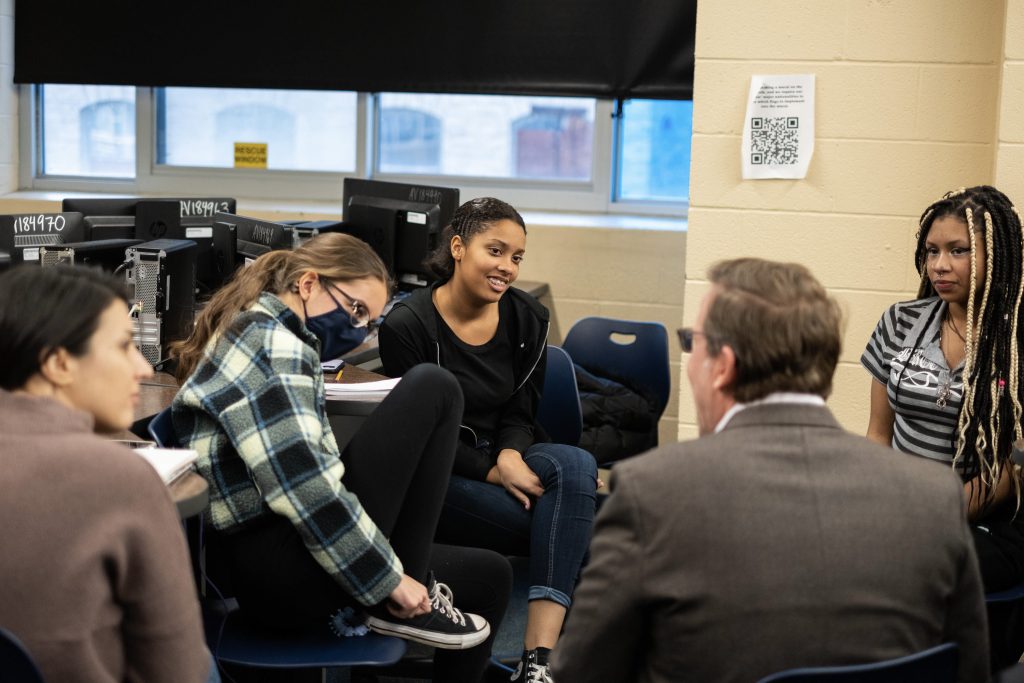
From the Ground Up
a survey and public forums explore the Syracuse community’s ideas for combating disinformation

ore than 92% of the 297 Syracuse residents surveyed by the Infodemic project and The Stand South Side Newspaper said that scams and disinformation have negatively affected their lives.
Armed with that knowledge, we invited residents to two public forums at the end of April to explore locals’ experiences with scams and disinformation and to ask them to brainstorm ideas for fighting back against the tsunami of false and misleading information we face every day.
Using a process designed by the Program for the Advancement of Research on Conflict and Collaboration (PARCC) at Syracuse University, participants sat in small groups, each with its own discussion leader and scribe. The discussion leaders help ensure that each participant gets a chance to talk and that no one dominates the conversation, while the scribes write down the essence of the discussion on flipchart paper, explained Tina Nabatchi, the director of PARCC.

“In a typical public meeting, one or two people dominate the discussion,” Nabatchi said. “At our forums, we use a ‘co-facilitation model’ so that everyone gets a chance to talk at their tables, which generally have six to ten participants. Those small-group discussions then inform the larger conversation as the scribes share key insights from their tables to the full room.”
At the forums – held April 20 at the Southwest Community Center and April 22 at the South Side Innovation Center – Nabatchi and the other organizers led participants through a series of discussions, starting with “where do they most often see scams and disinformation?” Participants were then asked to brainstorm ideas for combating disinformation and scams with a focus on how to help other community members recognize and appropriately respond to deceptive content.
After the brainstorming session, Nabatchi and the other organizers – SU assistant professor Greg Munno and former SU professor Shelvia Dancy (now at the University of North Carolina) – introduced the participants to the top six ideas for fighting disinformation that emerged from the survey. Those Top 6 ideas were:
- Teach basic fact-checking skills.
- Learn to recognize when media messages are trying to manipulate people.
- Government should take the lead in educating people on how to spot and respond to disinformation.
- Never click on links in unsolicited text messages.
- Be mindful when posting personal information and never post financial information.
- Look beyond the headline and image and read more of the story before reacting to it.
At the forums, participants were then asked to consider the ideas they brainstormed along with the six top ideas for the survey. Of all the ideas, which did they like the best?

After each table narrowed their favored ideas to two or three strategies, the scribes wrote the strategies on clean pieces of flipchart paper. The scribes then read the ideas to the full group and stuck the flipchart pages with the final ideas to a wall. When all the ideas were assembled, participants used stickers to vote on their favorite overall ideas in a process called “dotmocracy.”
The ideas that emerged with the most votes from the two forums were:
- Create more community resources, including ads that communicate ‘you’re not alone’ to people who have been victimized by scammers and free legal services for people who have been scammed. (16 votes)
- Create programs that educate kids and adults. (11 votes)
- Develop trainings and events to educate people about scams; target nursing homes for programs. – 11 votes
- Create an AI app that talks to and responds to scammers. (10 votes)
- Create new laws that stop companies from selling and trading data. (9 votes)
- Teach basic fact-checking skills. (8 votes)
- Create jobs to track scammers and alert people about them. (7 votes)
The forums are part of a larger effort to work with the community to find approaches to combating disinformation.
“We think ideas for combating disinformation that come from a specific community are just as strong as ideas from outside those communities,” Dancy said. “Giving people a forum to highlight their own ideas is critical. In this case, we focused on Syracuse, especially residents of color and residents from the South Side, and they produced impressive solutions that really show the strength of their creativity.”
That focus comes from research that shows that communities of color are often disproportionately targeted by disinformation, as well as support from a Knight Foundation “Combatting Disinformation in Communities of Color” grant.

In addition to the forums and survey, community engagement efforts included interviews with community members in the summer of 2022 and a session with high school students at the Institute of Technology at Syracuse Central’s Journalism Lab.
The participants at the event were all given anonymity to conform to the requirements of doing research at a university. They offered their assessment of the forums in a brief questionnaire.
“I enjoyed this event,” one participant wrote. “We could use more.”
Another said they thought it was rushed at 90 minutes and wanted more time. One participant said that they wanted to hear more from the other tables and encouraged more full-group discussions in future events. And another said they thought the forums should expand beyond the South Side.
I am hopeful this will be brought to other communities,” the participant said. “Keep the information flowing.”
